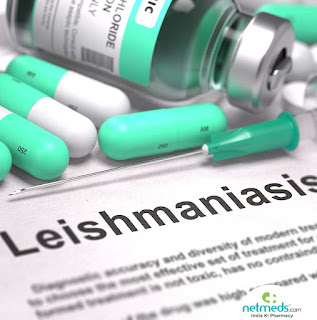Global Leishmaniasis Treatment Market: Current Trends and Future Prospects
Leishmaniasis, a parasitic disease caused by protozoa of the Leishmania genus, remains a significant public health concern in various parts of the world, especially in tropical and subtropical regions. This disease affects millions, causing a range of manifestations, from cutaneous sores to severe systemic involvement. With the global healthcare community increasingly focusing on neglected tropical diseases, the Leishmaniasis Treatment Market has garnered considerable attention, leading to significant advancements in recent years.
Current Treatment Landscape:
Traditionally, leishmaniasis treatment involved antimonials,
which, despite their efficacy, posed challenges due to toxic side effects and
lengthy treatment durations. In recent times, however, the landscape has
witnessed a paradigm shift. Researchers have been actively exploring new
therapeutic avenues, ranging from drug repurposing to novel formulations.
Miltefosine, the first oral drug for visceral leishmaniasis, marked a
breakthrough, offering a more patient-friendly alternative.
Additionally, liposomal amphotericin B formulations have
demonstrated remarkable efficacy against visceral leishmaniasis, reducing
treatment duration and adverse effects. These innovations not only enhance
patient compliance but also represent a stride towards more effective and safer
treatments.
Research and Development Initiatives:
The Leishmaniasis
Treatment Market is propelled by intensive research and development
activities. Pharmaceutical companies and research institutions are
collaborating, aiming to develop targeted therapies and diagnostic tools.
Immunotherapeutic approaches, including vaccines and immune modulators, are
under scrutiny, holding promise for both treatment and prevention. The emphasis
on immunotherapy aligns with the global trend towards precision medicine,
wherein treatments are tailored to individual patients, ensuring better
outcomes and reduced side effects.
Diagnostic Advancements:
Accurate and timely diagnosis is pivotal in leishmaniasis
management. Traditional diagnostic methods, such as microscopy and parasite
cultures, although reliable, have limitations concerning sensitivity and
specificity. Molecular diagnostics, particularly polymerase chain reaction
(PCR)-based assays, have gained prominence for their ability to provide rapid
and accurate results. Point-of-care tests are also in development, offering the
potential for quicker diagnoses in resource-limited settings. These
advancements not only aid in early intervention but also contribute
significantly to disease surveillance and epidemiological studies.
Challenges and Opportunities:
While significant strides have been made, challenges
persist. Limited awareness about leishmaniasis, especially in non-endemic
regions, delays diagnosis and treatment. Moreover, access to advanced
treatments remains unequal, disproportionately affecting impoverished regions
with limited healthcare infrastructure.
However, these challenges also present opportunities.
Increased awareness campaigns, coupled with collaborations between governments,
non-governmental organizations, and pharmaceutical companies, can bridge the
gap. Research funding, especially in neglected tropical diseases, can fuel
innovations, driving the development of affordable and accessible treatments.
Market Expansion and Investment:
The Leishmaniasis Treatment Market is witnessing a surge in
investments, reflecting the growing recognition of its potential.
Pharmaceutical companies are expanding their portfolios, investing in clinical
trials and regulatory approvals for novel therapies. Additionally,
philanthropic organizations and governmental bodies are actively supporting
research initiatives, aiming to eliminate leishmaniasis as a public health
threat.
In conclusion, the Leishmaniasis Treatment Market is
experiencing a transformative phase, marked by innovation and collaboration.
With continued research, heightened awareness, and concerted efforts towards
equitable healthcare access, the market is poised for substantial growth. As
new therapies emerge and diagnostic techniques advance, there is hope on the
horizon for millions affected by this debilitating disease, paving the way for
a healthier and more equitable future.
Read Our More Blogs : https://healthcarenewsbulletin.blogspot.com/2023/09/innovations-in-ophthalmology-novel.html
https://healthcarenewsbulletin.blogspot.com/2023/09/global-cerebral-somatic-oximeters.html
https://healthcarenewsbulletin.blogspot.com/2023/09/global-medical-devices-outsourcing.html
https://healthcarenewsbulletin.blogspot.com/2023/09/exploring-growing-fc-protein-and.html
https://healthcarenewsbulletin.blogspot.com/2023/09/global-infant-incubator-market-growth.html




Comments
Post a Comment